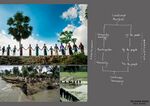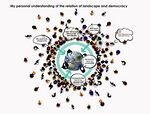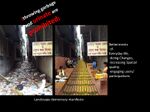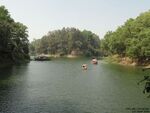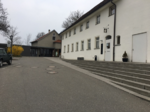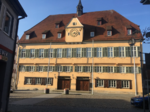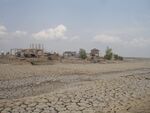LED Online Seminar 2019 - Working Group 9
--> Back to working group overview
Dear working group members. This is your group page and you will be completing the template gradually as we move through the seminar. Good luck and enjoy your collaboration!
Assignment 1 - Reading and Synthesizing Core Terminology
- You can read more details about this assignment here
- Readings are accessible via the resources page
Step 1: Your Landscape Democracy Manifestoes
Step 2: Define your readings
- Please add your readings selection for the terminology exercise before April 24:
A: Landscape and Democracy
Sieverts, Thomas (2003): Cities without cities. An interpretation of the Zwischenstadt. English language ed. London: Spon Press. (Michela Madiotto)
B: Concepts of Participation
Gaventa, John: The Powerful, the Powerless, and the Experts (Raphaela Roming)
Hester, Randolph (2005): Whose Politics, Landscape Architecture (Michela Madiotto)
C: Community and Identity
Francis, Mark: A Case Study Method for Landscape Architecture (Raphaela Roming)
Welk Von Mossner, Alexa (2014): Cinematic Landscapes, In: Topos, No. 88, 2014.(Zasim Uddin Tuhin)
Gafford, Farrah D. (2013): It Was a Real Village: Community Identity Formation Among Black Middle-Class Residents in Pontchartrain Park, Journal of Urban History 39:36
D: Designing (Majeda Khatun)
Salgado, Mariana, et al. (2015): Designing with Immigrants (Raphaela Roming)
Hester, Randolph: Life, Liberty and the Pursuit of Sustainable Happiness (Michela Madiotto)
Pritzker Prize winning architect Alejandro Aravena on sustainable design and community involvement in Chile (Zasim Uddin Tuhin)
Woodcraft, Saffron, et al.: Design for Social Sustainability: A Framework for Creating Thriving New Communities (Majeda)
E: Communicating a Vision
Boer, Florian, Jens Jorritsma, and Dirk van Peijpe. 2010. De Urbanisten and the wondrous water square. Rotterdam: 010 Publishers. Webpage and Video (Zasim Uddin Tuhin)
Steps 3 and 4: Concepts Selection and definition
- Each group member selects three relevant concepts derived from his/her readings and synthesize them/publish them on the wiki by May 15, 2019
- Group members reflect within their groups and define their chosen concepts into a shared definition to be posted on the wiki by June 12, 2019.
- Other group members will be able to comment on the definitions until June 30, 2019
- Each group will also report on their process to come to a set of shared definitions of key landscape democracy concepts on the wiki documentation until July 12, 2019
Concepts and definitions
Author 1: Zasim Uddin Tuhin
Welk Von Mossner, Alexa (2014): Cinematic Landscapes, In: Topos, No. 88, 2014.
- Fictional film is a film that tells a fictional or fictionalized story, event or narrative. In this style of film, believable narratives and characters help to convince the audience that the unfolding fiction is real. Lighting and camera movement, among other cinematic elements, have become increasingly important in these films. Great detail goes into the screenplays of narratives, as these films rarely deviate from the predetermined behaviors and lines of the classical style of screenplay writing to maintain a sense of realism. Actors must deliver dialogue and action in a believable way, so as to persuade the audience that the film is real life.
- Landscape is the dominant metaphor in fiction film because it provides a means to explore the intersection between narration and geography. While a useful and appropriate device to engage landscape, the metaphor also works to constrain the discourse surrounding cinematic landscapes.
Pritzker Prize winning architect Alejandro Aravena on sustainable design and community involvement in Chile
- When asked to build housing for 100 families in Chile ten years ago, Alejandro Aravena looked to an unusual inspiration: the wisdom of favelas and slums. Rather than building a large building with small units, he built flexible half-homes that each family could expand on. It was a complex problem, but with a simple solution — one that he arrived at by working with the families themselves. With a chalkboard and beautiful images of his designs, Aravena walks us through three projects where clever rethinking led to beautiful design with great benefit.
- Sustainability is nothing more than the rigorous use of common sense. We must change our way of thinking and realize that we cannot continue to consume land without looking to the future.
Boer, Florian, Jens Jorritsma, and Dirk van Peijpe. 2010. De Urbanisten and the wondrous water square. Rotterdam
- The Rotterdam North sub-municipality will be the first to transform a 'stony' plaza into an attractive city plaza that offers space for water, sports and greenery. The concept of 'water plaza' is a Rotterdam innovation in order to keep dry feet in a densely populated area during heavy rains and to make the city more attractive at the same time. These objectives will contribute to the ambitions of the Rotterdam Climate Initiative.
Author 2: Raphaela Roming
- Francis, Mark: A Case Study Method for Landscape Architecture: An important, but at the moment often underrated tool for developing our profession of landscape architecture is the case study methodology. It can be used in various different areas: teaching, research, practice, theory building, criticism & communication and outreach. In an exemplary case study for landscape architecture the LAF invented a methodology on which these studies in our profession can be developed. In this study it becomes clear that the redesign of a problematic public open space itself is not the solution to solve them.In the beginning there has to be a careful analysis in the users behaviour, social and economical situations - People have to get involved to it.
- Salgado, Mariana, et al. (2015): Designing with Immigrants - Means a lot of emotional involvement. Whatever method we want to use in a participation project with immigrants we have to focus on the relationship level. „Working with people from different cultural backgrounds is not straightforward and the atmosphere created influences results, perhaps even more than the techniques themselves. (…) Design researchers have to look on other fields to learn how to deal with and report on emotions“ But if we keep this in mind and focus on trust, empathy and relationships we can get enriching design visions.
- Gaventa, John: The Powerful, the Powerless, and the Experts: In a information society knowlege is a capital which is reserved to a closed club of experts though. As various studies have shown in the past knowledge is related to money and in that sense to power. Knowledge is rarely produced for poor or the powerless. There are developments and participation projects that want to improve the access and the generation of knowledge in the future. There need to be changes in this field and everybody should have access to knowledge and therefore there are current approaches to involve the powerless to it. This happens through participatory research, research withand by the people where they actually work out their own knowledge to be not reliant on so called experts anymore.
Author 3: Michela Madiotto
- Hester, Randolph: Life, Liberty and the Pursuit of Sustainable Happiness-Our affluence has empowered us to consume nonrenewable resources at alarming rates. We have seemingly gained freedom from environmental constraints through technology, standardization and specialization. We no longer experience ecological dependence or community connections in our daily lives. Our disassociation from the world around us offers us enormous short-term freedom. We talk about anomia. Anomie in this case refers to the state of confusion individuals and society feel about how to act toward their community and landscape. Our most realistic goal is to pursue sustainability with enough substantive and holistic insight that our pursuit can be sustained. Pursuing sustainability will require us to reformulate our premises about the best possible life we can achieve. To effect this transformation, the form of the city must enable us to act where we are now debilitated. This metamorphosis must be guided by three distinctive traits: enabling form, resilient form and impelling form.
- Hester, Randolph (2005): Whose Politics, Landscape Architecture-No landscape architectural design is ever implemented without political activity. Every act of city making, landscape architecture and environmental planning is a direct act to achieve some political end and to support power and authority. The test describes five types of designer postures that illustrate political stances. The Blissfully Naïve do not see the connectedness of systems beyond their landscape architecture. For The Blissfully Naïve the design of the landscape really be separated from the decision about its location. They are so focused on the form making of objects that they are blind to the impacts of their actions. Second are the Savvy Naïve who are more aware of connectedness. They understand the political implications of their design work but claim ignorance. They are active accomplices to political power but they say they are “just designers”. The third type is the Servant. Servant understand and often support the normative political agendas of their clients. The power of these clients is attractive because it enables the designer's art, most of which is rather mundane The Servant role can be particularly profitable for the business-oriented landscape architect. The fourth type is the contextualist. Contextualist will try to address broader social issues within the bounds of polite politics. Catalysts, the fifth type, are landscape architectural agents of change, the group usually considered activist designers. Consider four focuses of catalyst designers: environmental justice, deep democracy, cultural and biological diversity and radical sustainability.
- Sieverts, Thomas (2003): Cities without cities. An interpretation of the Zwischenstadt. English language ed. London: Spon Press.-One of the central lines of analysis to accompany the reading of Thomas Sieverts Cities without cities is represented by the correlation between diffusion and fragmentation of settlements and the processes of globalisation. Although the irrefutability of this statement probably warrants some ulterior element of evaluation, the fact remains that actually we are witnessing a proliferation of studies and research on the post-Keynesian landscape of the city that from diverse points of view, are inclined to highlight the relation that exists between the transformations which occur at a regional level and the process of capitalist accretion. A relation taking place in a context of immense elasticity and mobility of capital, a relation that characterizes the process of globalisation of markets, finance, production and employment. Nevertheless, if the relevant fact actually seems to be that of a growing interest on the part of territorial disciplines, of geography and sociology on the themes of diffused settlements and of social fragmentation that are related, they cannot not be considered like they have been for a long time, marginalized or misunderstood by the urban planning culture, in particular the European one.
Author 4: Majeda Khatun
- Woodcraft, Saffron, et al.: Design for Social Sustainability: A Framework for Creating Thriving New Communities: ‘Where are the PEOPLE?’ social sustainability can be defined as a ‘connectivity’ between people with its different human parameters. It is different from environmental sustainability. Social sustainability has many folds. Along with the infrastructural support for the community, it also enhance and engage the people of the community, providing support for social and cultural life. Sometimes often, spaces and services for people which evolves along with the people. To make it work, specialists from different pedagogies require to engage for the development framework. In this write up relationship between different elements of social sustainability were well explained and also a brief and clear list of the amenities for society is provided
- Crafting Westwood how a small community shaped it’s future: Another example for participatory design process. This article is about design process for community development of Westport of California. What is interesting to me, is applying theoretical methodology in real scenario. The framework for community development from ‘Planning neighborhood space for people (1982)’ and ‘community design primer (1990)’ was being followed.
To establish the goals of the project ‘Nominal group technique’, or ‘NGT’ had been used. IT was consisted one simple question to the users, community members, ‘what do you feel the most important action to take for the future of Westport?’ Along with the community members, alternative design was produced by the master’s student of University of Berkeley under the guidance of Randy Hester. And some interesting design intervention came up. In the conclusion, one of the most important thing noted, ‘the view from the inside’, ‘we noticed that participants words never changed, but our understanding of their meaning evolved’. I think this is the one of the most important thing about design and planning to understand the meaning of ‘needs’ because it varies and should be understood from its contexts.
- .......
Step 5: Reflection
Step 6: Revised manifestoes
- please look again at your initial manifestoes and update them with any new aspects/prespectives you have taken up during this seminar
Assignment 2 - Your Landscape Symbols
- You can read more details about this assignment here
Landscape Symbols Author 1: Zasim Uddin Tuhin
This image presents an artificial man-made lake located in Chittagong (a port city of Bangladesh) which serves the surrounding people as a source of water reservoir. Moreover, this lake plays a vital role for tourism and recreation purposes. So this landscape is a good example of people’s participation which creates a biotope also.
This image presents a man-made brick manufacturing plant located in Gazipur near to Dhaka (capital of Bangladesh) which serves the people as a source of building material. On the other hand, this place is responsible for environmental pollution also. So this scenario may be an example of people’s participation which is not ecofriendly.
Landscape Symbols Author 2: Raphaela Roming
Renaturation of the Neckar in Schwenningen As a part of the Landesgartenschau 2010 in Schwenningen the Neckar got renaturalised and became attractive for the public again. The water can be experienced now and people have access to it. Children can learn about nature and ecosystems by excursions in school or kindergarden. Through this renaturation people get also connected by open spaces that were developed nearby the new neckar shore.
Landscape Symbols Author 3: Michela Madiotto
The Cavaticcio park is a green area located in the central area of Bologna, near the MAMbo. The area is located below the ancient port of Bologna; in fact the name Cavaticcio was attributed to the canal that led to the port. Water has been a source of wealth and economic development for Bologna, since the Middle Ages. The park has become an integral part of the new cultural and entertainment hub that includes MAMbo and the film library. This place is opened just in summer time, it’s in the heart of Bologna. Here you can enjoy concert and party.
Very large and pretty park located in the Corticella neighborhood of Navile. Extensive park with a wonderful lake inside. Ideal park for running or spending some time in peace. Inside the park there is also a kiosk for those wishing to eat something to drink or eat. Well maintained by a voluntary association. Maybe an example of good democracy.
The park of the Montagnola was the first public park of the city conceived during the Napoleonic period, during the three days in which the emperor stopped in Bologna, with the intention of giving the city a characteristic imprint of French architecture.Nowadays the Montagnola area is the most heavily guarded area where the Municipality and the Police are doing so much to counter the situation of peddling and delinquency in the park.
</gallery>
Landscape Symbols Author 4: Majeda Khatun
Can use pattern be a ‘symbol’? Symbol is presented here, subjectively. In our country, Bangladesh, roads and streets are the heart of our very culture. Our political stands, social movements, cultural festivals, meeting place of different people of different age groups, all takes place in these roads and streets, thus it become ‘spaces’, for mass public, which are defined by the people.These ‘space’ defines, season, political status, times etc.This photograph which is used here, this road is located next to my residence. This particular capture, signifies some elements, from where one can read some phenomena. Some roadside shops area closed, less crowded comparing to the average day, wood blocks on the vans, only some people on the road, these signify Eid holidays. These characteristics keep on changing depending on changing the elements of life. It is the use pattern of the participants define the spaces.
Assignment 3 - Role Play on Landscape Democracy "movers and shakers"
- You can read more details about this assignment here
Assignment 4 - Your Landscape Democracy Challenge
- You can read more details about this assignment here
- Each group member will specify a landscape democracy challenge in his/her environment
Landscape Democracy Challenge 1
- Give a title to your challenge
- Yourname challenge 1.jpg
caption: why did you select this case?
- Yourname challenge 2.jpg
caption: what is the issue/conflict (1)
- Yourname challenge 3.jpg
caption: what is the issue/conflict (2)
- Yourname challenge 4.jpg
caption: who are the actors?
Your references:
- ...
- ...
Landscape Democracy Challenge 2
- Give a title to your challenge
- Yourname challenge 1.jpg
caption: why did you select this case?
- Yourname challenge 2.jpg
caption: what is the issue/conflict (1)
- Yourname challenge 3.jpg
caption: what is the issue/conflict (2)
- Yourname challenge 4.jpg
caption: who are the actors?
Your references:
- ...
- ...
Landscape Democracy Challenge 3
- Give a title to your challenge
- Yourname challenge 1.jpg
caption: why did you select this case?
- Yourname challenge 2.jpg
caption: what is the issue/conflict (1)
- Yourname challenge 3.jpg
caption: what is the issue/conflict (2)
- Yourname challenge 4.jpg
caption: who are the actors?
Your references:
- ...
- ...
Landscape Democracy Challenge 4
- Give a title to your challenge
- Yourname challenge 1.jpg
caption: why did you select this case?
- Yourname challenge 2.jpg
caption: what is the issue/conflict (1)
- Yourname challenge 3.jpg
caption: what is the issue/conflict (2)
- Yourname challenge 4.jpg
caption: who are the actors?
Your references:
- ...
- ...
Your Democratic Change Process
- Add Title
- Your Democratic Change Process Slide1.jpg
caption: ...
- Your Democratic Change Process Slide2.jpg
caption: ...
- Your Democratic Change Process Slide3.jpg
caption: ...
- Your Democratic Change Process Slide4.jpg
caption: ...
Reflection
- ....
- ....
- ....
Conclusion:
- ....
- ....
- ....
Your references
- ...
- ...
- ...
